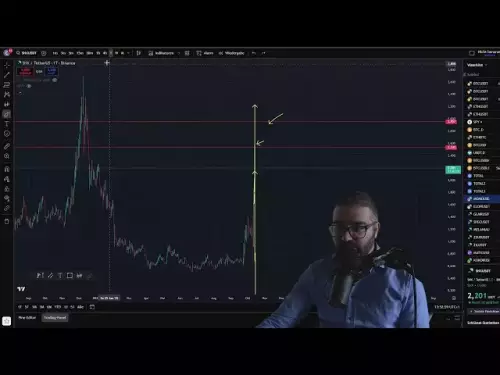-
 bitcoin
bitcoin $115692.075601 USD
5.13% -
 ethereum
ethereum $4162.931611 USD
11.68% -
 bnb
bnb $1310.063287 USD
17.56% -
 tether
tether $1.000983 USD
0.00% -
 xrp
xrp $2.534505 USD
8.16% -
 solana
solana $198.235737 USD
13.49% -
 usd-coin
usd-coin $1.000236 USD
0.02% -
 dogecoin
dogecoin $0.207352 USD
12.89% -
 tron
tron $0.323043 USD
3.62% -
 cardano
cardano $0.701559 USD
11.88% -
 hyperliquid
hyperliquid $39.924597 USD
8.30% -
 chainlink
chainlink $18.934457 USD
11.56% -
 ethena-usde
ethena-usde $1.000552 USD
0.02% -
 stellar
stellar $0.340575 USD
7.05% -
 bitcoin-cash
bitcoin-cash $545.011757 USD
8.86%
How to use grid trading bots with Ethereum contracts?
Grid trading bots on Ethereum use smart contracts and oracles to automate trades within predefined price levels, profiting from volatility while managing gas costs and security risks.
Oct 12, 2025 at 05:01 am
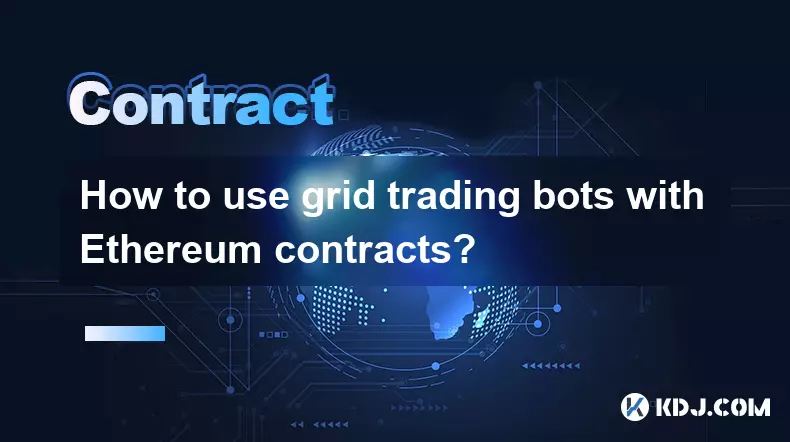
Understanding Grid Trading Bots in the Context of Ethereum
1. Grid trading bots operate by placing a series of buy and sell orders at predetermined price levels, forming a 'grid' around the current market price of an asset like Ethereum. These bots aim to profit from market volatility rather than directional trends. When integrated with Ethereum’s blockchain infrastructure, particularly through smart contracts, these bots can execute trades automatically based on predefined conditions without relying on centralized exchange APIs.
2. Ethereum smart contracts enable trustless automation, meaning that once a grid trading strategy is encoded into a contract, it runs exactly as programmed. This eliminates counterparty risk and reduces dependency on third-party platforms. The bot logic—such as price thresholds, order spacing, and profit-taking mechanisms—is embedded directly into the contract code, typically written in Solidity.
3. Deploying a grid trading bot on Ethereum requires writing a custom smart contract that listens to price feeds, often sourced from decentralized oracles like Chainlink. These oracles provide real-time ETH/USD or other relevant price data, which the contract uses to determine when to trigger buy or sell actions within the grid structure.
4. Gas fees are a critical consideration. Because every interaction with a smart contract consumes gas, frequent rebalancing or tight grid intervals can lead to high operational costs. Efficient contract design minimizes unnecessary state changes and leverages batch processing where possible to reduce transaction overhead.
5. Security is paramount. Open-sourcing the contract code and undergoing third-party audits help ensure there are no vulnerabilities that could be exploited, especially since funds are locked within the contract. Unauthorized access or bugs could result in irreversible loss of assets deployed in the grid strategy.
Setting Up a Smart Contract-Based Grid Bot
1. Begin by defining the parameters of the grid: upper and lower price bounds, number of grid levels, base and quote token (e.g., ETH and DAI), and allocation per level. These values are either hardcoded or set as configurable inputs during contract deployment.
2. Integrate a reliable oracle system to fetch external price data. Chainlink is commonly used due to its decentralization and security guarantees. The contract must have permissioned functions to update prices securely and prevent manipulation.
3. Implement logic for order placement and execution. Each grid level corresponds to a conditional statement in the contract. When the oracle reports a price crossing a threshold, the contract triggers a swap via decentralized exchanges like Uniswap or SushiSwap using their router contracts.
4. Include functions for fund management, such as depositing tokens, withdrawing profits, or adjusting grid parameters. Access control modifiers should restrict sensitive operations to the contract owner or authorized addresses.
5. Test the contract thoroughly on Ethereum testnets like Sepolia. Simulate various market conditions to verify that the bot correctly places and cancels orders, handles slippage, and updates balances accurately after each trade.
Interacting with Decentralized Exchanges
1. To execute trades, the grid bot contract must interface with Automated Market Maker (AMM) protocols. This involves calling functions like swapExactTokensForTokens on Uniswap’s router contract, specifying input/output tokens, amounts, and acceptable slippage.
2. Approvals are required before any transfer. The contract must call the ERC-20 approve() function for each token it intends to trade, granting the AMM router permission to spend the funds held in the contract.
3. Slippage tolerance must be carefully calibrated. In volatile markets, even small price movements can cause transactions to revert if the minimum output amount isn't met. Dynamic slippage settings based on volatility indicators can improve execution reliability.
4. Liquidity checks are essential. Before initiating a swap, the bot should verify sufficient liquidity exists on the chosen pool to avoid failed transactions or excessive price impact, especially for large order sizes.
5. Transaction ordering matters. Since Ethereum miners decide the inclusion sequence, frontrunning is a risk. Using Flashbots or private transaction relays may help mitigate this issue, though they add complexity to the execution layer.
Monitoring and Maintaining Autonomous Grid Strategies
1. Real-time monitoring tools can track contract activity, balance changes, and executed trades. Services like Tenderly or Blockchair allow developers to inspect transactions and debug issues post-deployment.
2. Gas optimization remains an ongoing task. As network conditions change, the frequency of price updates or trade executions may need adjustment to maintain cost-efficiency.
3. Emergency stop mechanisms should be implemented. A pause function allows the operator to halt trading during extreme volatility or suspected exploits, preserving capital until manual review.
4. Profitability analysis should be conducted regularly. On-chain data can be exported to analytics platforms to assess performance metrics such as win rate, average return per trade, and drawdown periods.
5. Regular audits and code upgrades are necessary to adapt to evolving DeFi standards and address potential vulnerabilities revealed over time.
Frequently Asked Questions
How do grid bots handle sudden price crashes on Ethereum?Grid bots rely on predefined price levels. During a sharp drop, multiple sell orders may execute rapidly, potentially depleting holdings below the lowest grid level. Without dynamic range adjustment, the bot stops operating until the price re-enters the set bounds.
Can a grid trading contract operate without oracle integration?No. Oracle integration is essential for accurate price discovery. Relying solely on on-chain data from DEX reserves introduces lag and susceptibility to manipulation, making external oracles a necessity for reliable operation.
What happens if gas prices spike while the bot is active?High gas fees can make frequent trading uneconomical. Transactions may fail or become unprofitable. Some advanced contracts include gas price thresholds that temporarily suspend trading when fees exceed a certain limit.
Is it possible to run multiple grid strategies in one contract?Yes, a single contract can manage multiple grids for different token pairs or varying parameters. However, this increases complexity and attack surface, requiring robust internal access controls and separation of fund accounting.
Disclaimer:info@kdj.com
The information provided is not trading advice. kdj.com does not assume any responsibility for any investments made based on the information provided in this article. Cryptocurrencies are highly volatile and it is highly recommended that you invest with caution after thorough research!
If you believe that the content used on this website infringes your copyright, please contact us immediately (info@kdj.com) and we will delete it promptly.
- XRP Price Prediction: Weekend Rollercoaster or Rally?
- 2025-10-12 08:45:16
- Bittensor (TAO): Super Bullish Signals Point to Potential 2x Rally
- 2025-10-11 10:25:12
- Silver Price Correction: Navigating the Dip & Identifying Key SEO Keywords
- 2025-10-11 10:25:12
- Decoding Crypto Trends: Bittensor's Bull Run, Cardano's Dip, and LivLive's Presale Buzz in 'Uptober 2025'
- 2025-10-12 08:45:16
- MoonBull: The Crypto Meme Coin Promising 1000x Gains?
- 2025-10-11 10:30:01
- Crypto Payroll Revolution: Stablecoins, Altcoins, and the Future of Salary Payments
- 2025-10-11 10:30:01
Related knowledge

How to calculate the ROI for Ethereum contracts?
Oct 09,2025 at 04:36pm
Understanding Ethereum Contract ROI Basics1. Return on Investment (ROI) for Ethereum contracts begins with tracking the initial capital deployed into ...
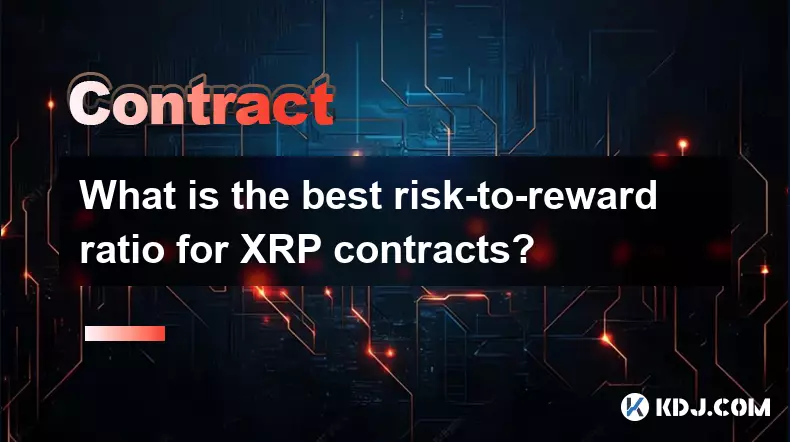
What is the best risk-to-reward ratio for XRP contracts?
Oct 11,2025 at 04:18am
Understanding Risk-to-Reward in XRP Futures Trading1. The risk-to-reward ratio is a fundamental metric used by traders to evaluate the potential profi...
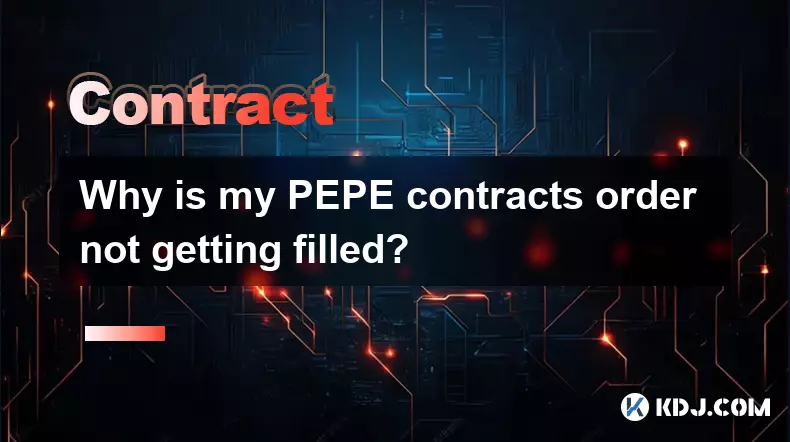
Why is my PEPE contracts order not getting filled?
Oct 12,2025 at 06:01pm
Understanding Liquidity Issues in PEPE Contracts1. Low liquidity is one of the primary reasons a PEPE contract order may not get filled. Many meme-bas...

Is it better to trade Dogecoin contracts or spot?
Oct 12,2025 at 04:54pm
Understanding Dogecoin Spot Trading Mechanics1. Spot trading involves the direct purchase and ownership of Dogecoin at the current market price. Trade...
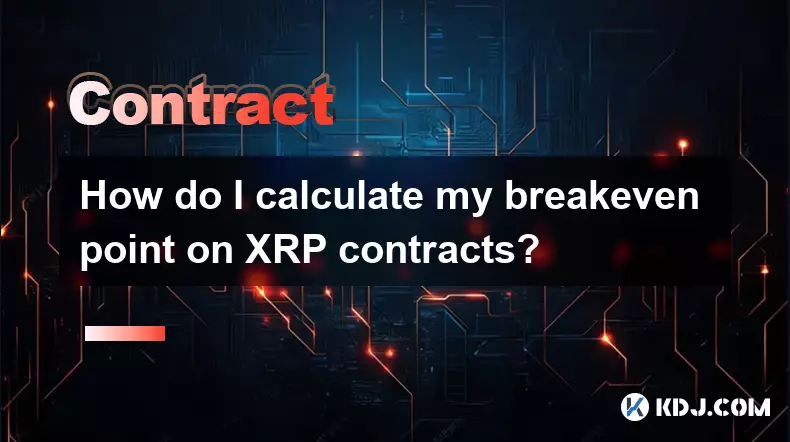
How do I calculate my breakeven point on XRP contracts?
Oct 09,2025 at 08:36pm
Understanding the Breakeven Point in XRP Futures TradingCalculating the breakeven point for XRP contracts is essential for traders who engage in futur...

How to use grid trading bots with Ethereum contracts?
Oct 12,2025 at 05:01am
Understanding Grid Trading Bots in the Context of Ethereum1. Grid trading bots operate by placing a series of buy and sell orders at predetermined pri...

How to calculate the ROI for Ethereum contracts?
Oct 09,2025 at 04:36pm
Understanding Ethereum Contract ROI Basics1. Return on Investment (ROI) for Ethereum contracts begins with tracking the initial capital deployed into ...

What is the best risk-to-reward ratio for XRP contracts?
Oct 11,2025 at 04:18am
Understanding Risk-to-Reward in XRP Futures Trading1. The risk-to-reward ratio is a fundamental metric used by traders to evaluate the potential profi...

Why is my PEPE contracts order not getting filled?
Oct 12,2025 at 06:01pm
Understanding Liquidity Issues in PEPE Contracts1. Low liquidity is one of the primary reasons a PEPE contract order may not get filled. Many meme-bas...

Is it better to trade Dogecoin contracts or spot?
Oct 12,2025 at 04:54pm
Understanding Dogecoin Spot Trading Mechanics1. Spot trading involves the direct purchase and ownership of Dogecoin at the current market price. Trade...

How do I calculate my breakeven point on XRP contracts?
Oct 09,2025 at 08:36pm
Understanding the Breakeven Point in XRP Futures TradingCalculating the breakeven point for XRP contracts is essential for traders who engage in futur...

How to use grid trading bots with Ethereum contracts?
Oct 12,2025 at 05:01am
Understanding Grid Trading Bots in the Context of Ethereum1. Grid trading bots operate by placing a series of buy and sell orders at predetermined pri...
See all articles





















